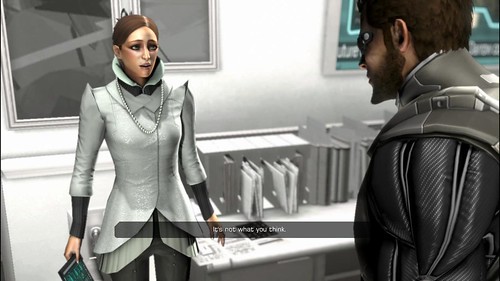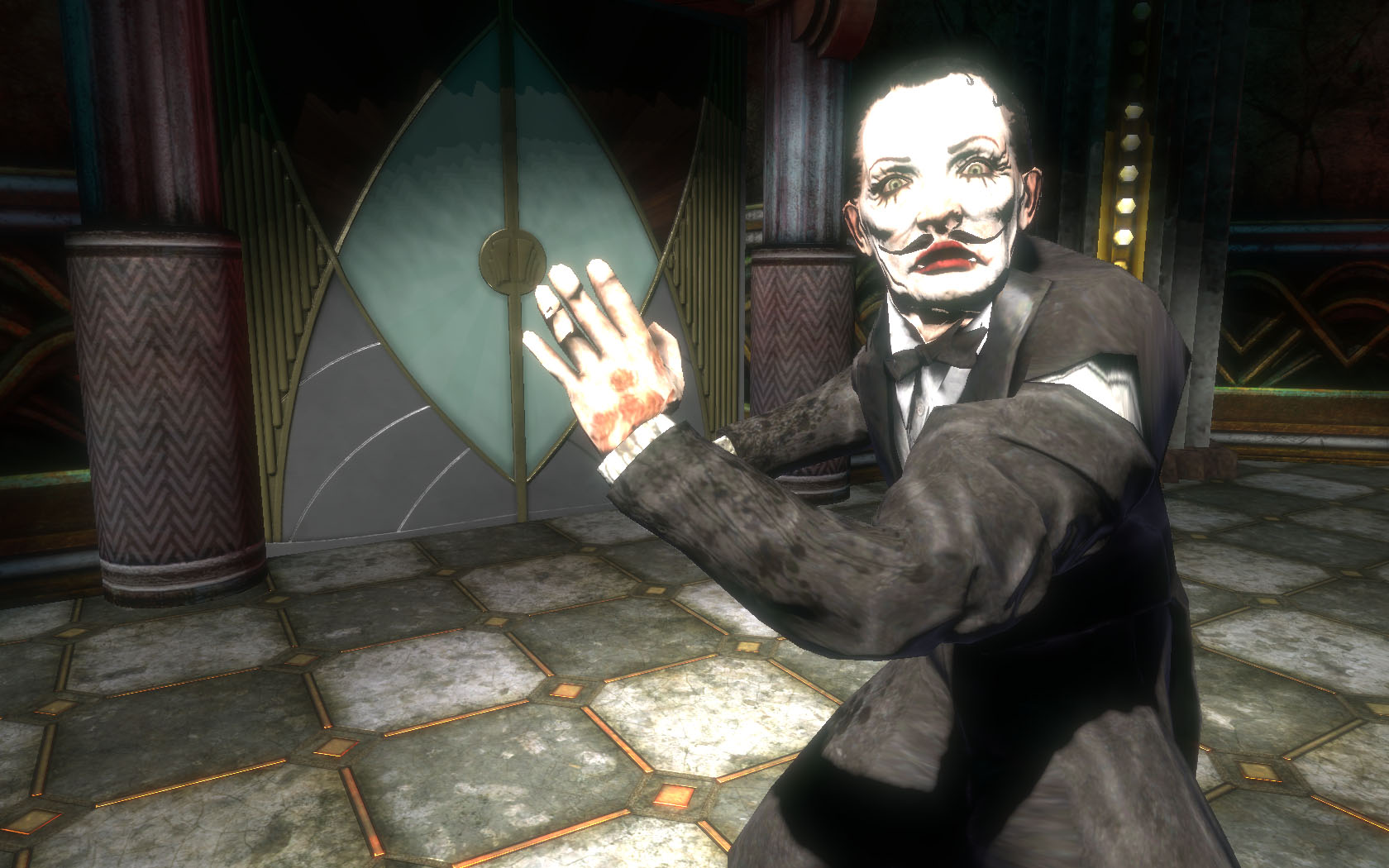Trending
Opinion: How will Project 2025 impact game developers?
The Heritage Foundation's manifesto for the possible next administration could do great harm to many, including large portions of the game development community.
A study of the three categories characters in video games fall in.

Hello everyone. After a long while without posting (been pretty busy lately, with the uni and my -still unsuccessful- research for an internship... and the release of Xcom and Dishonored too, I'll admit.), I'm coming back with a new article, pretty much a sequel of my precedent one about the general creation of characters for stories. This time, I will focus on the specificities of characters in video games.
For this analysis, I will divide the characters in three categories, and give details about which ropes to pull to have successful characters in each of these categories.
First category: the playable character
Before going further in this part, I would like to clarify one thing. By the playable character, I am talking about the one character the player is in control of. Of course, this is, much more often than not, the "main character", or the "hero" of the story, but this is not always the case. Here are some examples where the playable character is not the main character:
In Fire Emblem 6 (the first fire Emblem released outside of Japan, uder the title of "Fire Emblem"), whil the main characters of the story are Lyn, Eliwood and Hector, the player actually incarnates "Marc", the stategist ordering them around the battlefied. This Marc has a purely gameplay role, and is almost useless to the story.
In Baten Kaitos, a RPG released pretty late in the Gamecube's life cycle, the player incarnates the "guardian angel" of Kalas, the main character of the story. Other characters will often refer to him in dialogs, asking him his opinion on various situations etc.
In most RPG games, where you have a team, the "playable character" is the first one you start playing with. You know, that guy who fights with a sword, has better stats than anyone else, and is always, always in your team? Especially if your game has real time fighting, it's the one you'll always end up controlling, because the other ones are not as fun to play as...

So you forgot the pizzas? No problem, we actually needed a healer in our party!

Avernum 3
Another series I loved for this was the Avernum series. The game gave you a world to explore, but no real character so as to speak. It was up to you to decide weither you wanted to have a lone hero, a group of childhood friends, a rag-tag team of guys who ended up toghether for no specific reason... All you had to do was to create their stats. Some of the games actually allowed you to hire NPCs with some basic backstory, but who also stopped talking once they joined your team. Even Avernum 5, who tells you that you are a group of freshly recruited imperial soldiers sent underground, allows you this level of personnalisation: it did not tell you how loyal you were to the empire (and it matters A LOT during the main quest), why you joined the army in the first place, or anything. This contrasts highly with the the game NPCs, which all have their own lines, own business, own history, own personnality... Every dialog was unique, even with the merchants or the inkeepers. They also had reactions to your group, both his reputation (bandits would try to cut your throats early in the game, but easily run away screaming once you started to get renowned), but also his composition. You had the choice between humans, slitherins (lizardmen) or nephils (feline men). The nephils are a pretty closed people, who barely kept any contact with outsiders since the Empire tried to kill them all. I remember one point, in Avernum 3, I had run into a nephil settlement, and they allowed me in because they saw I had a nephil with me... 2 hours later, I ran into a group of travelling nephils, who actually attacked me because they hated nephils who forgot what humans did to them and befriended humans. These kinds of separate reactions for a same choice actually quickly led me to think about why exactly this Nephil was in my group, and what was his attitude towards humans. Maybe he was a slave, or maybe he was the leader of the group, since he was always the one walking in front of the others (it was actually because Nephils get a bonus for finding traps...)...
Why are you so angry?
Anyway, time to get back on subject. Some people might complain that a silent protagonist is a huge handicap if you want a really well developped story, especially if you want a branching story. Of course, as technology develops, we can now afford to completely include the choices of the player in the game, both in terms of gameplay AND story. But you'll have to be VERY careful with that, as it is pretty easy to get this wrong. One example is Deus Ex: Human Revolution. For 90% of the game, you are in control of every act and word did by Jensen... Until that scene where he finds Megan again. I, for one, was pretty happy rescuing her (especially since finding her back and rescuing her is a pretty long quest)... And Adam's angry reaction completely broke the immersion for me. It was not the Adam I had imagined, it was not me.
Trust me, the third ending from the left is the best one !
It can be also pretty hard to include enough reactions to cover every potential reaction by the player, and have them actually matter in the game. By definition, branching storylines lead to a very big number of potential solutions, and the worst part is that most players will only experience 1 to 3 of the options you devised for them. Nah, forget what I said... The worst part is when you are doing a sequel for your game, and have to implement both new choices and previous choices (meaning creating a lot of assets that won't be used in the game), or only make one set of choices canon and the others irrelevant (thus aliening yoursefl from a large part of the previous players) or make all choices irrelevant (then alienating yourself from every player).
I actually liked her voice
Think about it. There are many games where you have a NPC that serves as a guide, either always with you or appearing out of thin air whenever you need him. Almost every Zelda game has one: Navi, Tatl, Ezlo, Midna, Fai... Other games use them: Jack in Vampire the Masquerade, Atlas in Bioshock, Vald in Magicka, Ford Cruller in Psychonauts, Bottles the Mole from Banjo-Kazooie, The Watcher in Darksiders, etc.
Double H
Of course, these characters are not always mentors. But the fact that they remain next to the player for long times means that they will usually be allies. Their role is primordial, they will be the ones litteraly making the story of your game. It's these characters you need to work on, to implement in the game for real.
I actually killed him. Does this make me a monster?
One game that makes a good use of this idea is Bioshock. Every time you move in to a new part of Rapture, you meet new characters that clearly reflect their environments. In the medical, it's Steinman, the mad doctor. It's easily one of the most disgusting characters you meet in the game, and its level is the most unsettling one. Your travel also makes you meet Julie Langford, the scientist who created Arcadia. Interestingly enough, while this character is the only one not completely mad or trying to kill you, she's also iconic of the less disturbing and threatening area of the Game, Arcadia, notable for being the only one with vegetation, natural looking flowing water (rivers, lakes etc) and light.Read more about:
BlogsYou May Also Like